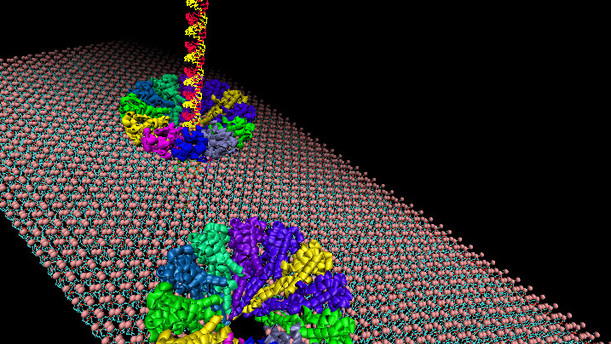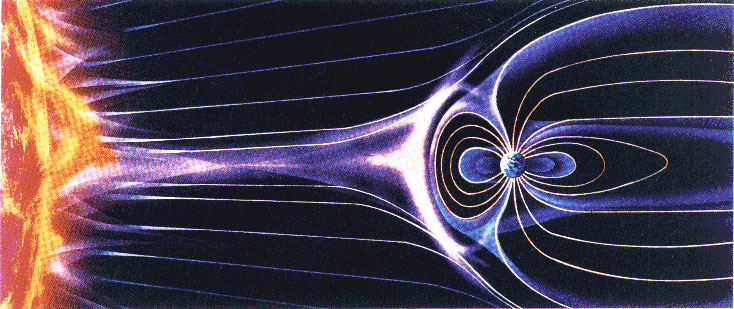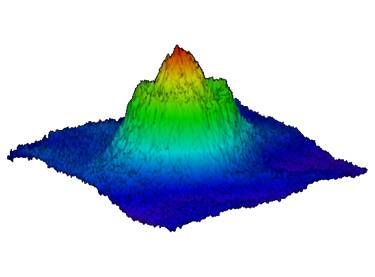An RNA-powered nanomotor has become the engine for an artificial pore able to transmit nanoscale material through a membrane, the next step in research on using nanomotors to package and deliver therapeutic agents directly to infected cells. Eventually this could enable use of nanoscale medical devices to diagnose and treat diseases.
In a study led by University of Cincinnati (UC) biomedical engineering professor Peixuan Guo, PhD, members of the team inserted the modified core of a nanomotor, a microscopic biological machine, into a lipid membrane. The resulting channel enabled them to move both single- and double-stranded DNA through the membrane. The engineered channel could have applications in nano-sensing, gene delivery, drug loading and DNA sequencing, says Guo.
University of Nottingham scientists have overcome a significant challenge for electrochemists - a way of probing right into the heart of an electrochemical reaction, a breakthrough that will help scientists understand how catalysts work and help create even better catalysts.
They were able to study the reaction at the point where the solution touches the surface of the metal electrode bringing in the electricity using spectroscopy under ultra high vacuum.
Spotted hyenas aren't smarter than chimpanzees but they cooperate better and it shows on cooperative problem-solving tests, says a new article about a very old study that just recently got some notice.
Captive pairs of spotted hyenas (Crocuta crocuta) that needed to tug two ropes in unison to earn a food reward cooperated successfully and learned the maneuvers quickly with no training. Experienced hyenas even helped inexperienced partners do the trick.
New research says that sunspots provide an incomplete measure of changes in the sun's impact on Earth over the course of the 11-year solar cycle - good news for global warming proponents concerned that lower temperatures (and higher ones) may correspond to solar activity.
The study led by scientists at the National Center for Atmospheric Research (NCAR) and the University of Michigan found that Earth was bombarded last year with high levels of solar energy at a time when the sun was in an unusually quiet phase and sunspots had virtually disappeared.
Scientists say they have discovered the chemical reaction that forms the molecule triacetylene in the ultra-cold atmosphere of Titan, one Saturn's more popular moons for researchers since Titan's current atmosphere is thought to resemble Earth's early one.
Transitions are exciting because at temperatures close to absolute zero the transition from one quantum phase to another can provide a deeper understanding of fundamental laws of the universe. A team of scientists at the University of Chicago has created the first direct images of the transition between phases of ultracold cesium gas, as it changes from normal to superfluid to Mott insulator, making it possible to 'see' the phenomenon as it happens.
The most striking visual feature of this phase transition? A many-layered wedding cake structure.
 Study: Caloric Restriction In Humans And Aging
Study: Caloric Restriction In Humans And Aging Science Podcast Or Perish?
Science Podcast Or Perish? Type 2 Diabetes Medication Tirzepatide May Help Obese Type 1 Diabetics Also
Type 2 Diabetes Medication Tirzepatide May Help Obese Type 1 Diabetics Also Life May Be Found In Sea Spray Of Moons Orbiting Saturn Or Jupiter Next Year
Life May Be Found In Sea Spray Of Moons Orbiting Saturn Or Jupiter Next Year









